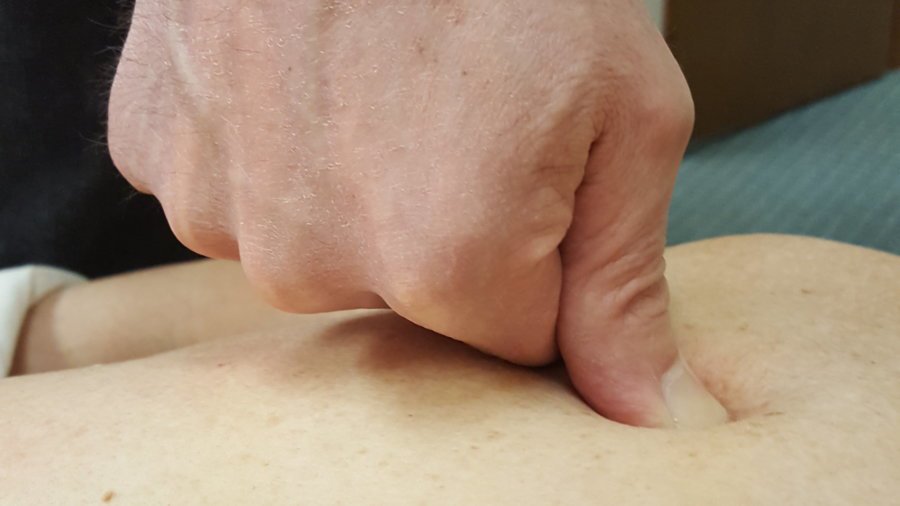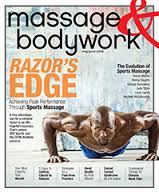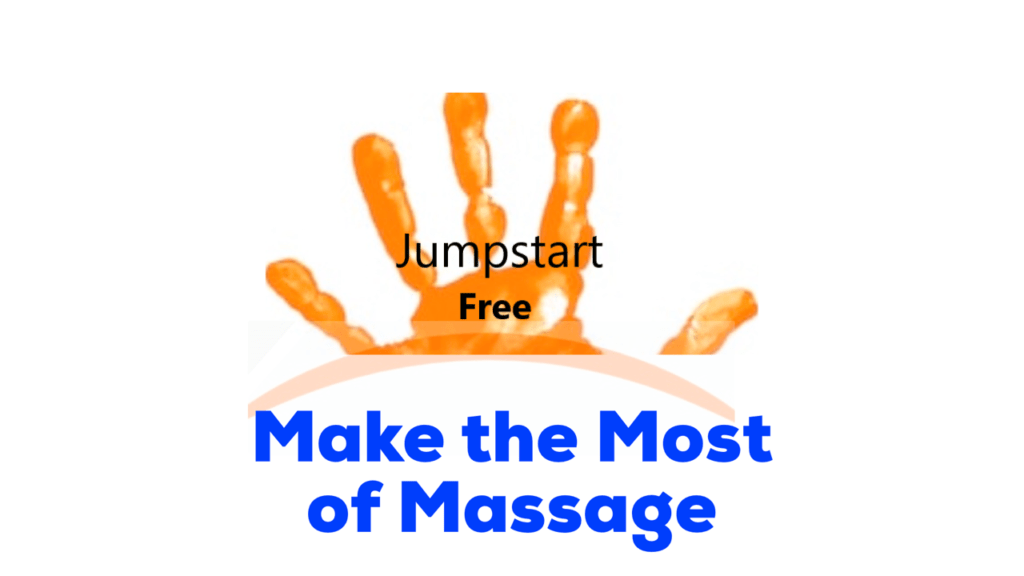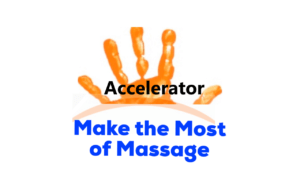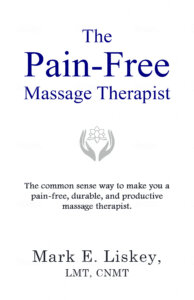Early on in my massage career I cut my massage teeth in chiropractors’ offices. Over the years, chiros have become colleagues, and I’ve learned two very important things from them: 1. Don’t be afraid to work the muscles/ligaments on and around the spine, 2. Palpate the spine (and around the spine) for tight and tender areas. Now I palpate like a chiropractor but with a different purpose in mind.
Squirting Massage Lotion
There are differences between how MTs approach a body and how chiros approach a body. Once when taking a neuromuscular seminar I partnered up with a chiroprctor during the practice sessions. When it was his turn to work on me, he literally took the bottle of massage lotion, held it above my back and squeezed, as if he were squirting ketchup on a bun.
Granted, most chiros wouldn’t squirt massage lotion on a patient. However, this example does illustrate that massage clients and chiropractic patients have different therapeutic touch expectations.
A chiro can get away with being abrupt and mechanical with her touch because the expectation is primarily about correcting an issue, not relaxing the body. However, we need to maintain a sensitive touch and keep connectivity with the client in order to fulfill an expectation of relaxation.
Though different in some ways, we’re similar in other ways. A big one is that we both deal with back pain. That means that both chiros and MTs need to know how to palpate back muscles and the spine.
How to Palpate Like a Chiropractor
Lesson #1: Don’t be afraid of the spine.
The first hurdle to palpating the spine is to understand that we’re not going to hurt someone if we touch their spinuous processes. Chiros do it all the time. In fact, they are experts at palpating the spine.
Becoming comfortable with palpating the spine simply comes down to getting reps in. I’ll show you how to do that in a minute.
Lesson #2: Palpate the spine (and around the spine) for tight/tender areas.
Palpating the spine can give us clues as to where we might want to work. For example, if I’m palpating the spinous processes and one is tender or seems off center from the spinous process above and below it, I would investigate for tenderness and/or tightness in the paraspinal muscles on either side of the misaligned and/or sensitive spinous process.
When I investigate, I often find tight or tender spots in the paraspinal muscles, and in my experience, clients get pain relief when I work these areas.
Two Ways to Palpate Like a Chiropractor
Here are two ways that I palpate like a chiropractor but in a relaxing way. One is with fingers on top of the spinous processes and the other is with fingers around the spinous processes.
You don’t need to apply a lot of pressure with either technique, just enough to feel the spinous processes. When I apply pressure I also do a gentle and relaxing back and forth (perpendicular to the spine) motion.
If I find a spinous process that is “off” and an area to either side of the spine that is tight and/or tender, I will apply focused and appropriate pressure. Check out this pain scale video for establishing appropriate pressure.
I’ll use combination body parts (barred thumbs, thumb and fist of same hand, knuckle and thumb) and massage tools (specifically the T-bar and L-bar) to apply pressure.
In this video I demonstrate the 2 spine palpation techniques: Massage Palpation Techniques for the Spine. (My massage model got sick. So the camera person is on the table and I’m filming myself doing the massage palpation techniques—so it’s a little shaky.)
Small and Big Picture
Palpating the spine can give you a big picture and a detailed view of the client’s back. Go up and down the spine for a big picture view (e.g., reveal a scoliotic pattern) and when you find a spinous process irregularity, zero in on that area. By working the paraspinal muscles near the irregularity, you might just address that one area that has never been worked before. And you might give your client greater pain relief.

How do you build a massage business with pain-relief clients?
Go here: Jumpstart.
Jumpstart is a free course that has everything you need to get to 30K a year working for yourself.
Need to take a meh massage business to a dream massage business?
Go here: Accelerator.
This is how I took my 40K business to 80K+.
